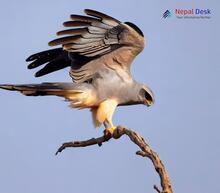The Circus genus comprises an intriguing group of birds of prey known as harriers. These fascinating creatures can be found in various parts of the world, but their dazzling presence in Nepal is particularly noteworthy. With their unique hunting techniques and profound ecological impact, these species have captured the hearts of bird enthusiasts and conservationists alike. Read on to learn more about the Circus genus and its species found in Nepal.
A Closer Look at Harriers
Harriers belong to the family Accipitridae and are medium-sized raptors characterized by their slender bodies, long wings, and distinctive facial discs. They are known for their exceptional ability to soar close to the ground while hunting prey, mainly consisting of small mammals, birds, insects, and sometimes reptiles. This methodical approach enables them to use their keen vision and hearing to locate and catch their prey.
Ecologically, harriers are vital as they maintain a healthy balance within ecosystems by controlling rodent populations and contributing to natural pest control.
Circus Genus Species in Nepal
Nepal is home to several harrier species that grace its diverse landscapes. Some of these are:
1. Circus Aeruginosus (Western Marsh Harrier)
2. Circus Cyaneus (Hen Harrier)
3. Circus Pygargus (Montagu's Harrier)
Conservation Efforts
The Circus genus species found in Nepal face several threats related to habitat loss, agricultural development, pollution, and even illegal hunting. However, various conservation organizations and local communities are working together to preserve these species by establishing protected areas and implementing environmental education programs. With continued efforts to maintain balance in their ecosystems, these majestic harriers will continue to thrive in the skies of Nepal.
In conclusion, the Circus genus offers a treasured glimpse into the world of harriers and their role as an essential part of our ecosystem. By appreciating their beauty and unique hunting skills, we can help promote conservation efforts and secure their existence for future generations to admire and learn from. So next time you're in Nepal or exploring its rich biodiversity online, remember to look up and admire these mesmerizing avian wonders.




